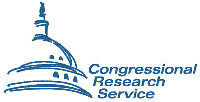Congress of the United States
Date of this Version
2008
Abstract
Rising energy prices and concern over greenhouse gas emissions have focused congressional attention on energy alternatives, including wind power. Although wind power currently provides only about 1% of U.S. electricity needs, it is growing more rapidly than any other energy source. In 2007, over 5,000 megawatts of new wind generating capacity were installed in the United States, second only to new natural gas-fired generating capacity. Wind power has become “mainstream” in many regions of the country, and is no longer considered an “alternative” energy source.
Wind energy has become increasingly competitive with other power generation options. Wind technology has improved significantly over the past two decades. CRS analysis presented here shows that wind energy still depends on federal tax incentives to compete, but that key uncertainties like climate policy, fossil fuel prices, and technology progress could dominate future cost competitiveness.
A key challenge for wind energy is that electricity production depends on when winds blow rather than when consumers need power. Wind’s variability can create added expenses and complexity in balancing supply and demand on the grid. Recent studies imply that these integration costs do not become significant (5-10% of wholesale prices) until wind turbines account for 15-30% of the capacity in a given control area. Another concern is that new transmission infrastructure will be required to send the wind-generated power to demand centers. Building new lines can be expensive and time-consuming, and there are debates over how construction costs should be allocated among end-users and which pricing methodologies are best.
Opposition to wind power arises for environmental, aesthetic, or aviation security reasons. New public-private partnerships have been established to address more comprehensively problems with avian (bird and bat) deaths resulting from wind farms. Some stakeholders oppose the construction of wind plants for visual reasons, especially in pristine or highly-valued areas. A debate over the potential for wind turbines to interfere with aviation radar emerged in 2006, but most experts believe any possible problems are economically and technically manageable.
Federal wind power policy has centered primarily on the production tax credit (PTC), a business incentive to operate wind facilities. The PTC is set to expire on December 31, 2008. Analysts and wind industry representatives argue that the onagain off-again nature of the PTC is inefficient and leads to higher costs for the industry. While there is often bipartisan support for the PTC in Congress, debate centers more fundamentally on how to offset its revenue losses. A federal renewable portfolio standard — which would mandate wind power levels — was rejected in the Senate in late 2007; its future is uncertain.
If wind is to supply up to 20% of the nation’s power by 2030, as suggested by a recent U.S. Department of Energy report, additional federal policies will likely be required to overcome barriers, and ensure development of an efficient wind market.


Comments
Published by Congressional Research Service, www.crs.gov, RL34546